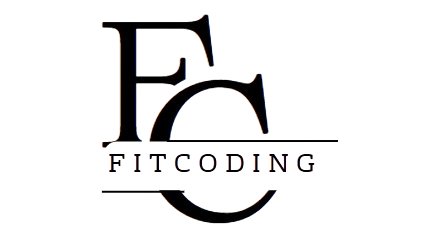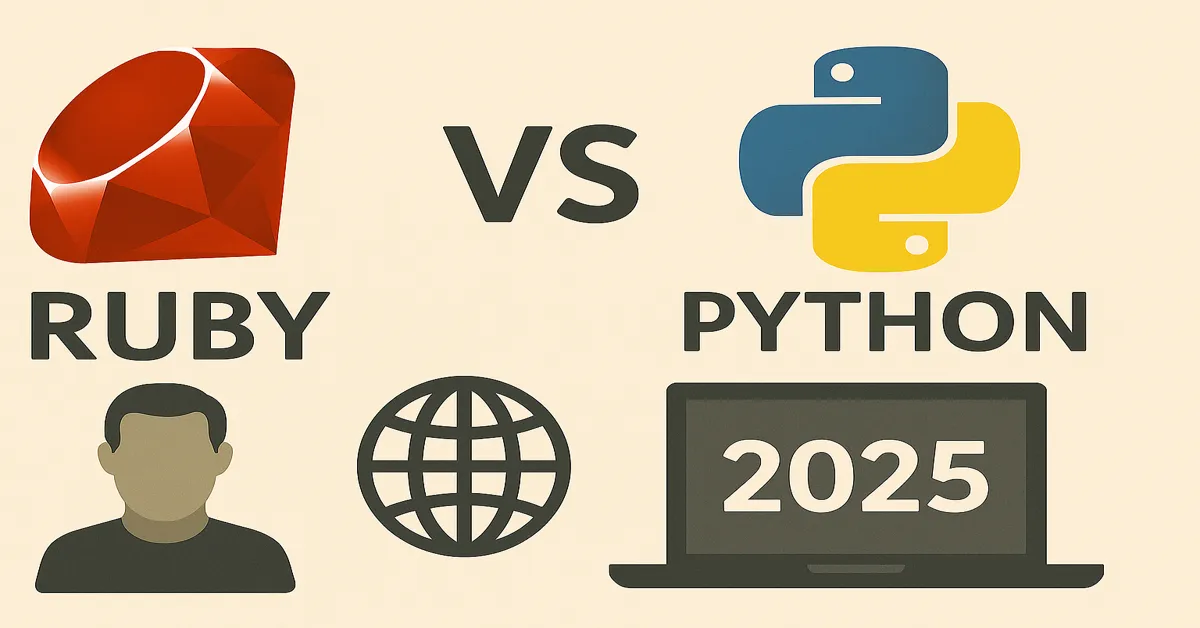In the ever-evolving landscape of web development, few decisions are as foundational—and potentially paralyzing—as choosing your first programming language. Even in 2025, the question remains stubbornly persistent among newcomers and career-switchers: Ruby vs Python?
Both languages have been around for decades. Both have vibrant communities, elegant syntax, and proven success in building web applications. And both have legions of developers ready to defend their tool of choice. But for someone standing at the threshold of the software world—whether a computer science graduate, bootcamp learner, or self-taught coder—the decision often hinges not on loyalty but on practicality.
This article isn’t about picking sides. It’s about offering a clear, up-to-date comparison of Ruby and Python as they stand in 2025—where they shine, where they fall short, and what that means for you as a prospective web developer – Ruby vs Python.
The Philosophies: How Ruby and Python Think Differently
Before diving into frameworks and ecosystems, it’s worth understanding the philosophies that guide each language. These aren’t just marketing slogans—they inform everything from syntax to community culture – Ruby vs Python.
Ruby: Developer Happiness and Expressiveness
Ruby was created in the 1990s by Yukihiro “Matz” Matsumoto with one primary goal: to make programming joyful. Ruby values expressiveness, elegance, and the principle of least surprise—code should do what you expect, and it should read like English.
Its syntax is flexible, forgiving, and at times poetic. Ruby doesn’t just let you write code; it invites you to craft it.
Python: Clarity and Readability
Python, created by Guido van Rossum, was guided by a different principle: There should be one—and preferably only one—obvious way to do it. Python is minimalist and explicit. Its famously strict indentation rules enforce structure, and its syntax discourages ambiguity.
Python isn’t poetic, but it is clear, clean, and readable—even to non-programmers. That’s why it’s often the language of choice in education, data science, and automation.
Web Development in 2025: The Real-World Context
In 2025, web development has grown both simpler and more complex. Simpler because of maturing frameworks, boilerplate reduction, and deployment tools. More complex because of increased expectations: real-time interactivity, responsive UX, mobile-first design, and AI integration.
Both Ruby and Python remain relevant, but they’ve found different niches.
The Frameworks: Rails vs Django (and Beyond)
Let’s address the elephant in the room: when people say “Ruby,” they often mean Ruby on Rails. When they say “Python,” they often mean Django or FastAPI.
Ruby on Rails: Mature, Full-Stack, Opinionated
Rails remains Ruby’s flagship framework. In 2025, it’s leaner, faster, and more relevant than it’s been in years thanks to modern integrations like Hotwire and Turbo. These enable highly interactive applications without relying on JavaScript-heavy frontends – Ruby vs Python.
Why developers love Rails:
- Convention over configuration: Rails makes a lot of decisions for you, speeding up development.
- Full-stack approach: It comes with everything—from ORM to testing to asset pipeline.
- Developer productivity: Rapid prototyping and iteration are where Rails still shines.
Rails in 2025:
- Supports modern frontend workflows via Hotwire
- Integrated with ViewComponent and Turbo Streams
- Increasingly used in SaaS, admin interfaces, and MVP startups
Django: Reliable, Secure, Enterprise-Ready
Django is Python’s most prominent web framework. Like Rails, it’s a batteries-included solution. It emphasizes reusability, security, and clarity. Django powers websites ranging from government portals to social platforms and API-driven systems.
Why developers choose Django:
- Explicitness: You configure more, but you understand exactly how things work.
- Security-first: Comes with built-in protection against common web vulnerabilities.
- Scalability: Popular among mid-size to large-scale applications.
Django in 2025:
- Works seamlessly with Python’s data ecosystem
- Paired increasingly with frontend frameworks like Vue and React
- Common in enterprise, edtech, fintech, and data-centric applications
The Ecosystems: Beyond the Framework
Choosing a language isn’t just about syntax. It’s about what the ecosystem makes possible.
Ruby Ecosystem
- Web Development: Rails, Hanami, Bridgetown
- Tooling: Rake, Bundler, Puma, Sidekiq
- DevOps: Capistrano, Chef (written in Ruby), Mina
- Testing: RSpec, Capybara, FactoryBot
Ruby’s ecosystem is focused and opinionated. It doesn’t try to do everything—it does web development exceptionally well.
Python Ecosystem
- Web: Django, Flask, FastAPI
- Data Science: Pandas, NumPy, Matplotlib, TensorFlow
- Machine Learning & AI: Scikit-learn, PyTorch
- Automation & DevOps: Fabric, Ansible, Invoke
Python’s strength is breadth. It’s a true generalist language, enabling developers to move from web apps to machine learning pipelines without switching ecosystems.
Learning Curve and Community Support
Ruby:
- Beginner-friendly syntax, but requires learning the Rails way
- Smaller but highly passionate and helpful community
- Fewer new tutorials compared to Python, but rich documentation for Rails
Python:
- Highly accessible for beginners, especially in general programming
- Massive global community with endless tutorials and Stack Overflow threads
- Learning Django is straightforward, but building a full-stack app may involve more choices
In 2025, Python is still the top language for education, which means more beginner resources, but Rails arguably offers a smoother ride once you’re ready to build serious apps.
Performance and Scalability
Neither Ruby nor Python are particularly fast compared to compiled languages like Go or Rust. But they’re fast enough for the vast majority of web applications.
Ruby (with Rails):
- Performance has improved with YJIT, TruffleRuby, and Rails 7+ optimization
- Rails is easy to scale horizontally (Heroku, Hatchbox, AWS)
- Real-time capabilities via ActionCable and Turbo Streams
Python (with Django):
- Good performance with ASGI, uvicorn, and FastAPI
- Python’s async story has matured but still requires careful handling
- Easy to scale using WSGI-compatible services like Gunicorn or uWSGI
Python wins slightly in asynchronous performance, especially with FastAPI, while Ruby’s strength lies in monolithic productivity and real-time updates with minimal boilerplate.
Career Prospects and Job Market
One of the most practical considerations for choosing a language is career viability.
Ruby in 2025:
- Still in demand at companies like Shopify, GitHub, Basecamp
- Popular in product-focused startups for rapid MVP development
- Fewer job listings than Python but often higher autonomy roles
Python in 2025:
- Top 3 most popular languages globally
- Hugely in demand for backend development, data science, and AI
- Broader career options across industries—from finance to healthcare to robotics
If your goal is flexibility across domains, Python is hard to beat. If you want to specialize in web product development, Ruby (especially Rails) offers depth and clarity.
Developer Experience and Productivity
This is where subjectivity creeps in, but it matters.
Ruby Developers Say:
- “Rails lets me build features, not configure tools.”
- “I write less code and get more done.”
- “The code feels elegant, almost like writing prose.”
Python Developers Say:
- “I understand every line of my stack.”
- “I can transition from a web API to a machine learning pipeline in one day.”
- “The community is enormous and welcoming.”
Both ecosystems offer great tooling, testing, and deployment pipelines in 2025. Ruby has a more integrated experience, while Python gives you more choices to tailor your stack.
Trends to Watch: Ruby and Python Moving Forward
Ruby:
- Continued growth of Hotwire/Turbo Native for hybrid mobile/web apps
- New frameworks like Bridgetown modernizing frontend workflows
- Greater investment in developer ergonomics and performance
Python:
- Rising influence of FastAPI for modern, async web APIs
- Expansion of AI + web development integrations (e.g., AI-powered content apps)
- Strong presence in scientific, academic, and enterprise sectors
So, Which One Should You Learn in 2025?
Let’s break it down by goals:
| Goal | Recommended Language |
|---|---|
| Launching a startup MVP | Ruby (with Rails) |
| Getting into data science | Python |
| General-purpose programming | Python |
| Building a full-stack web app alone | Ruby |
| Joining a large enterprise team | Python (with Django or FastAPI) |
| Building admin dashboards or internal tools | Ruby |
| Learning to code for the first time | Python (with Django later) |
| Building API-first microservices | Python (FastAPI) or Rails API mode |
Final Verdict: A Choice Between Craft and Versatility
In 2025, both Ruby and Python remain excellent choices for web development. But they offer different strengths – Ruby vs Python:
- Choose Ruby if you value elegant code, rapid feature development, and an opinionated full-stack experience that lets you move fast with confidence.
- Choose Python if you want a versatile tool that opens doors to backend development, data analysis, scripting, AI, and beyond.
Ultimately, the best language is the one you’ll actually stick with long enough to build something meaningful. Whether you’re crafting your first Rails controller or deploying your first Django app, the most important line of code is the one you write next – Ruby vs Python.
Read:
Hotwire Integration with Rails 7+: The Future of Full-Stack Ruby
CVE‑2025‑43857 in net‑imap: What Ruby Developers Need to Know
How to Fix Common Ruby Gem Installation and Configuration Issues
Is It Still Worth to Learn Ruby in 2025?
Unveiling Ruby: Insights from Stack Overflow and Developer Survey
FAQs
1. Which language is better for beginners in 2025: Ruby or Python?
Python is generally considered more beginner-friendly due to its simple syntax, large community, and widespread use in education. However, Ruby (with Rails) offers a smoother learning curve for full-stack web development once you’re ready to build real applications. If your focus is web development alone, Ruby is equally beginner-accessible within its domain.
2. Is Ruby still relevant for web development in 2025?
Yes. Ruby remains highly relevant, especially with Rails 7+ and Hotwire, which streamline full-stack development without complex frontend frameworks. Ruby is widely used in startups, SaaS platforms, and teams that prioritize developer speed and product focus.
3. What are the main differences between Rails and Django?
Rails (Ruby) emphasizes convention over configuration and rapid development with built-in full-stack tools. Django (Python) focuses on explicit configuration, security, and modularity, making it ideal for enterprise or data-heavy applications. Rails tends to feel more cohesive, while Django offers more flexibility and integration with Python’s broader ecosystem.
4. Which language offers better long-term career opportunities: Ruby or Python?
Python offers broader career options due to its dominance in web development, data science, AI, automation, and scripting. Ruby offers fewer total jobs but can lead to well-paid, focused roles in product development and startups. If you want versatility, Python is the safer choice; for web-focused roles, Ruby remains a strong contender.
5. Can I switch between Ruby and Python easily after learning one?
Yes. Both are high-level, dynamically typed, object-oriented languages, so switching is relatively smooth. Concepts like routing, MVC architecture, ORM, and testing have parallels in both ecosystems. If you learn one well, transitioning to the other mostly involves learning new syntax and tooling rather than rethinking core concepts.











